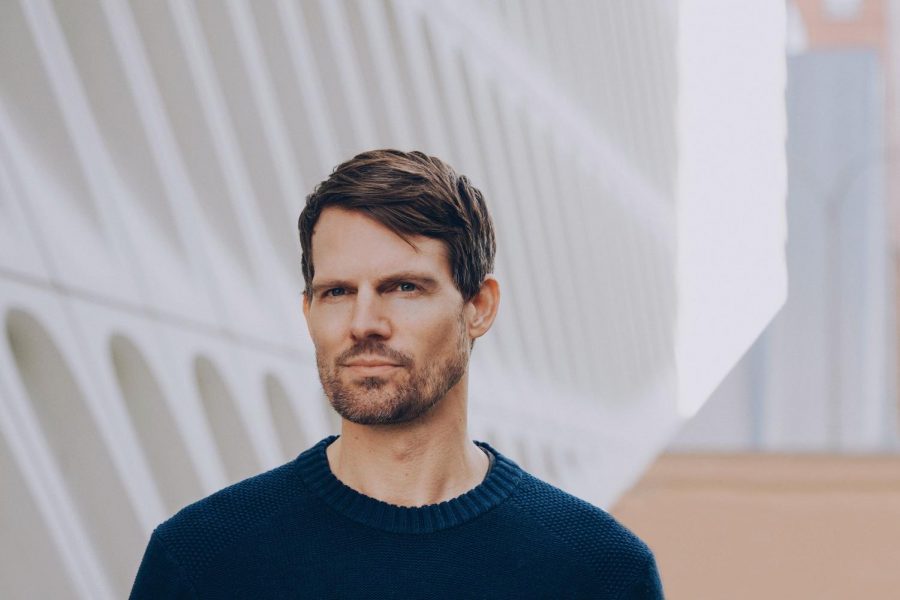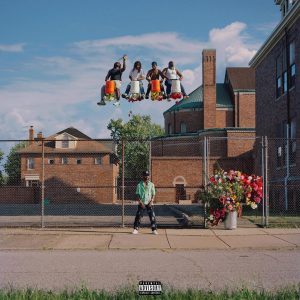Beats and Breakthroughs: Tycho Reflects on the Music-Making Process
COURTESY OF MISHA VLADIMIRSKIY
Besides music, Tycho also has an interest in design work. “I was a visual artist already; the music came second, but from the same place.”
September 25, 2020
Two-time Grammy-nominated musician and producer Tycho, aka Scott Hansen, headlined the ABRACADABRA Fest, which took place on Twitch from Sept. 17-20.
ABRACADABRA, a livestreaming four-day event, featured DJ Snoopadelic, Diplo, Paris Hilton, T-Pain and BLOND:ISH. All funds raised for the event went toward environmental organizations such as Parley for the Oceans, Lonely Whale and Bye Bye Plastic. The event focused on music, wellness and social impact programming geared toward eco-activism and building online connections. During this age of COVID-19, artists have tried to find different ways to connect with their fans. The Observer spoke with one of the headliners, Tycho, about his latest release, his music and his design.
The Observer (O): What have you been doing during quarantine?
Tycho (T): I’ve been in the studio, mainly. It’s pretty rare for me to have the ability to just completely focus and create.
O: When did you start making music?
T: I was in college and I really appreciated music. I never made music until I was 20 or 21. I just loved listening to music. I was really into drum, bass and electronic music.
O: You’re a graphic designer as well as a musician; what kind of design are you into and what kind of music informed you?
T: I felt that there has always been good design associated with electronic music, or at least design that resonates with me; it’s typically more minimal and technical stuff. So, like, Full Cycle Records and LTJ Bukem and Photek during the ’90s. I started to make fake album covers for music that didn’t exist — in a sense, it was like the cart before the horse. Then I started making the music. Photek and DJ Shadow were the ones who I was like, “I want to make music that sounds like this,” as opposed to “I like this music and this is inspiring.” That was what I specifically wanted to do.
During Photek’s drum and bass years a track off of the “Logical Progression” album was angular and abstract.The music duo Boards of Canada I heard around 2000 or 2001, and I got into Ulrich Schnauss; they most informed what I’ve been making.
O: How did you get into design?
T: I had always drawn my whole life, as a kid. I was a visual artist already; the music came second, but from the same place.
O: As an artist, you used to layer, but over the years you’ve decided to strip down the music. What made you come to that decision?
T: I think the sound that I stumbled into originally was this: “I don’t know what I’m doing, but this sounds cool to me.” It wasn’t technically proficient, but it had a sound. Youth Lagoon is a good reference point: “The Year of Hibernation” record. I was talking to him, and it was recorded on a laptop microphone — it was done with the cheapest stuff, and you can hear that. But he used it in a way and employed those techniques and made it pleasing and interesting to listen to.
O: Stylistically, how does your music connect to your design?
T: For me, I could keep making lo-fi, everything smashed, everything processed in this weird way. But, for me, as a producer and an engineer, the logical path forward would be to try to refine the sound and make things more minimal. It’s the same with the graphics; like you mentioned, all the covers are minimal, but if you look back to “Dive” and “Past is Prologue,” my first two records have pretty complex photo-realistic/collage-type covers. In the same way, I’ve always tried to refine my visual work and make the message more efficient. I’m trying to do the same with music. Whether that’s to a creative end or some vision, the main thing for me is to exercise these skills and make them better and make music that is technically correct as well as having something interesting going on. Marry the older stuff with the new stuff — I’m always trying to strike that balance.
O: Most of the time people lose their creativity in being too technically trained. As someone who has no professional training in music and design, what are your thoughts on creating?
T: The value of understanding the process, the tools and engineering side. If you’re constantly relying on other people or something outside of your control to express your vision, there will always be this breakdown. Sometimes it can be this cool thing, it can be a collaborative thing, but if you want to exercise full control over the end product you’ll have to learn all those processes and try to master them. Without them, you’ll always have someone filtering them in the end.
O: Do you have any advice for people who want to combine multiple passions?
T: Anything you want to be good at and do for a living, whether you’re a woodworker, painter or musician, it’s all about mastery of the craft. There’s something to be said for being new to something and just stumbling through things and having happy accidents. There’s something interesting about the result of someone not knowing how to use equipment or using it wrong.
Over time, the idea is to master those things. The hardest thing is the balancing of time. For me, it was about dedicating the first 10 years of my career 100% to the work, to learning and finding a common thread between music and design. If there’s some vision you have and you feel like you can’t express it with one medium, like music, it’s nice to have another medium to express the vision in a whole and complete way.
O: A pivotal moment in your career has been putting vocals in your music, and you had said recently that you wanted your music to have a “conversation between vocal and instrumental passages.” What made you decide to pursue vocal records after years of putting out non-vocal records?
T: I attempted to do it way early in my career because I was really into Zero 7, cinematic orchestra and Thievery Corporation. At the time, I felt like I didn’t connect with the right people and I didn’t have the technical skills to realize the vision. I had a way to go in learning the process and learning what I wanted the music to be in the first place. I felt like I expressed an overall idea with those three records, “Dive,” “Awake” and “Epoch.” I was looking for something interesting and different to do, so I was like, “Let me try to go back to the very start and make that vocal record you always wanted to make.”
O: Over the past week you’ve been promoting your latest remix, “Bodies” by Muna and The Knocks. In an Instagram post you mentioned you like “combining elements, styles and genres.” What genres have you been experimenting with lately?
T: In “Weather,” I got back into trip-hop and breakbeat, DJ Shadow stuff, like sampling drums and rhythmic structures. I like lower-tempo stuff. The next record, I envision, would be picking up where “Epoch” left off, going back into darker sonic territory with abstract time signatures and different drum structures.
Through ABRACADABRA Fest, fans who were unable to go to his Simulcast tour had the opportunity to reconnect with the musician during the live-streaming event. Fans should look forward to hearing more music from the San Francisco music producer, who will be releasing a new project later this month.













